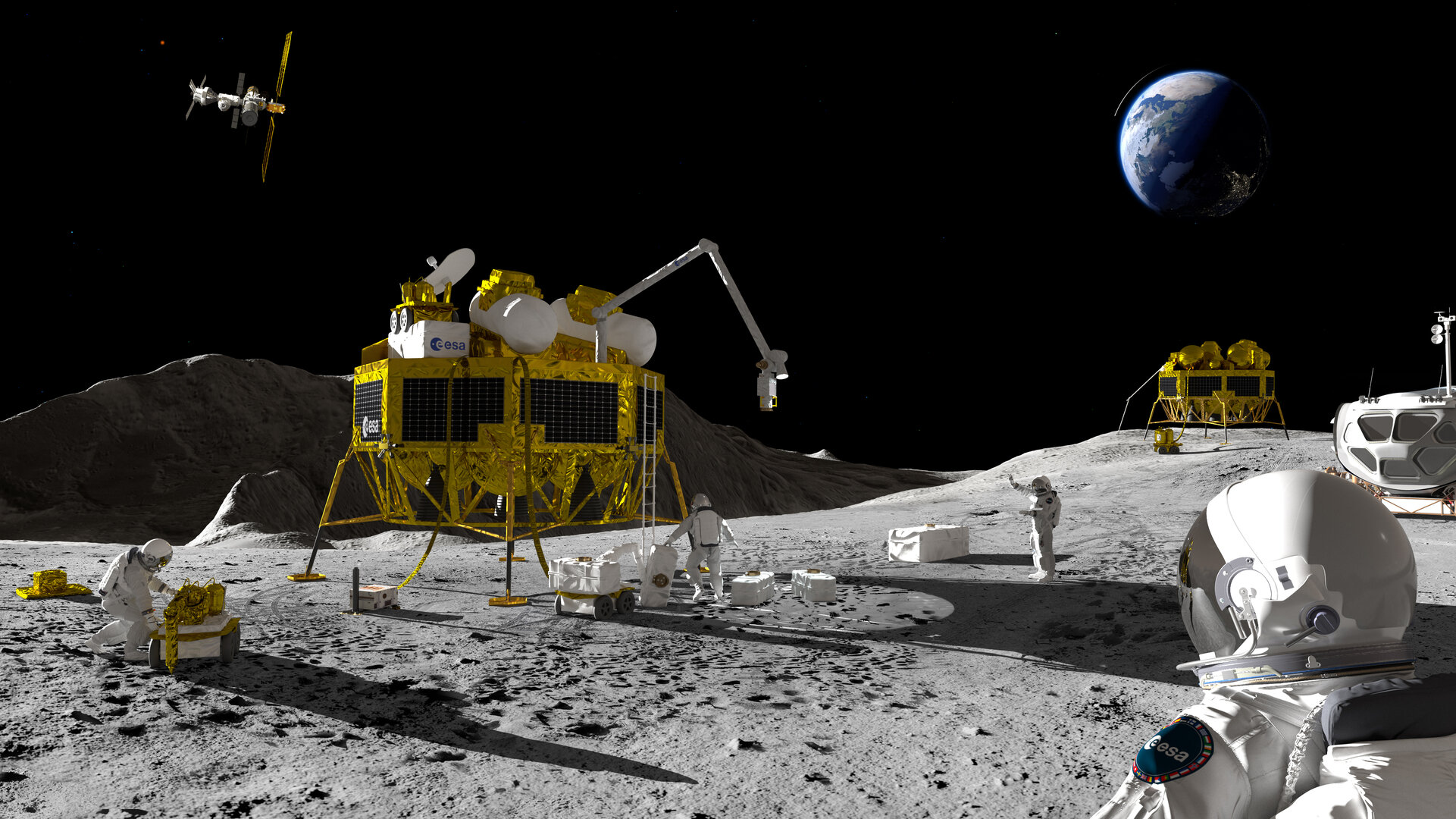Argonaut: Europe's lunar lander programme
The European Space Agency (ESA) lunar lander programme, Argonaut, represents Europe’s autonomous, versatile and reliable access to the Moon. The programme is a key part of ESA’s lunar strategy and will support future robotic and crewed missions, contributing to international efforts to establish a long-term human presence on the Moon.
Forward to the Moon

Argonaut will play a key role in international lunar exploration, supporting NASA's Artemis programme while providing Europe with independent access to the Moon. As part of ESA's Explore2040 strategy, Argonaut is a fully European project designed to be flexible and resilient to changes in evolving global exploration efforts while contributing to Europe's vision for lunar exploration.
Argonaut can transport a variety of cargo, including vital resources for astronauts such as food, water and air, as well as rovers, science instruments, and infrastructures for communication and power generation.

Argonaut is designed to endure the Moon’s extreme conditions, including the 14-day lunar night with temperatures that can drop to -150°C. Unlike the Apollo missions, which operated only during the lunar day, future lunar exploration will require surviving these harsh nights. With a 5-year lifetime on the surface, Argonaut will support this international effort to establish a long-term human presence on the Moon, helping to develop the capabilities needed to live and work on the lunar surface.
Argonaut will integrate with ESA’s Lunar Link telecommunication system on the Gateway as well as elements of ESA’s Moonlight Lunar Communications and Navigation Services (LCNS) programme.
Argonaut's architecture

The Argonaut spacecraft consists of two main components: the Lunar Descent Element (LDE) and the Passenger. The LDE is the Argonaut programme’s lunar lander, responsible for transporting and landing the Passenger on the Moon. The Passenger, up to 1500 kg, is the cargo, which may include scientific instruments, technology demonstrators and essential supplies.
Thales Alenia Space will lead the European consortium to build the LDE, currently including a core team from OHB in Germany, Thales Alenia Space in France and the United Kingdom, DLR in Germany, and Spinwork in Portugal.
First mission: ArgoNET

The ArgoNET mission concept, launching aboard a four-booster Ariane 6 rocket in 2031, will be the first operational flight of the Argonaut programme. It will deliver key “NET” infrastructure – navigation, energy and telecommunications – to support international efforts in establishing a sustainable human presence on the Moon.
ArgoNET will improve Moonlight navigation capabilities around the lunar South pole by serving as a selenodetic reference station. Just as geodesy enables precise mapping and navigation on our planet, selenodesy provides accurate positioning and surface measurements for the Moon. By acting as a stable reference point, ArgoNET will provide energy and relay communications between assets on the lunar surface, improving navigation on the Moon.
In parallel to the late stages of ArgoNET's development, more Argonaut missions are planned for the next decade.
The Argonaut patch

As Apollo and Artemis before it, the name Argonaut is inspired by Greek mythology, referencing the legendary explorers who sailed aboard the Argo in search of the Golden Fleece. The programme’s patch reflects this European heritage, depicting a white crescent Moon shaped like a ship and its sail, symbolising the journey to the lunar surface. A golden dot represents the lunar lander and the Golden Fleece, while the stars in the background represent the future possible missions Argonaut will launch. The ship’s reflection carries a hidden message of its destination in Morse code: “LUNA”.
Argonaut is a key step in ESA’s contribution to sustainable lunar exploration, ensuring that Europe remains an integral part of international efforts to explore the Moon.
A CAD model of a full Argonaut lander for illustration purposes is available here.
The passenger part of the model is generated by ESA, while the Lunar Descent Element (LDE) is inspired by the concept of the industrial prime contractor Thales Alenia Space in Turin, Italy.
Please consider mentioning ESA and Thales Alenia Space if any material is made using this CAD model.















 Germany
Germany
 Austria
Austria
 Belgium
Belgium
 Denmark
Denmark
 Spain
Spain
 Estonia
Estonia
 Finland
Finland
 France
France
 Greece
Greece
 Hungary
Hungary
 Ireland
Ireland
 Italy
Italy
 Luxembourg
Luxembourg
 Norway
Norway
 The Netherlands
The Netherlands
 Poland
Poland
 Portugal
Portugal
 Czechia
Czechia
 Romania
Romania
 United Kingdom
United Kingdom
 Slovenia
Slovenia
 Sweden
Sweden
 Switzerland
Switzerland

























